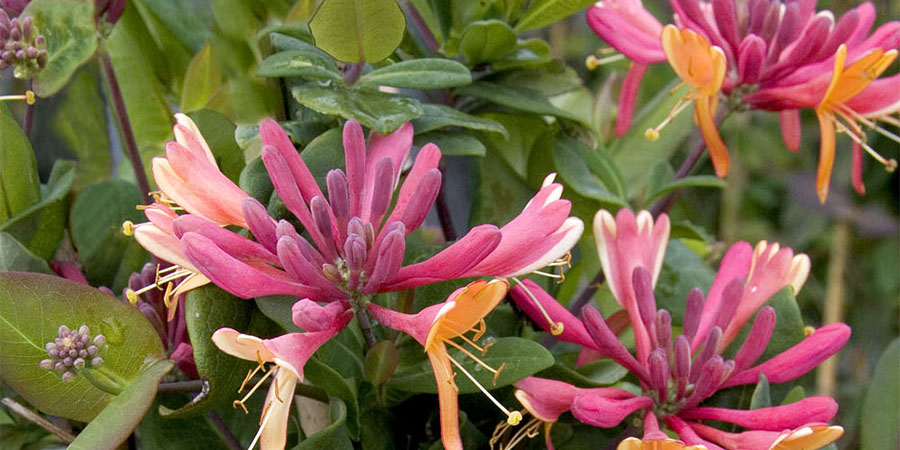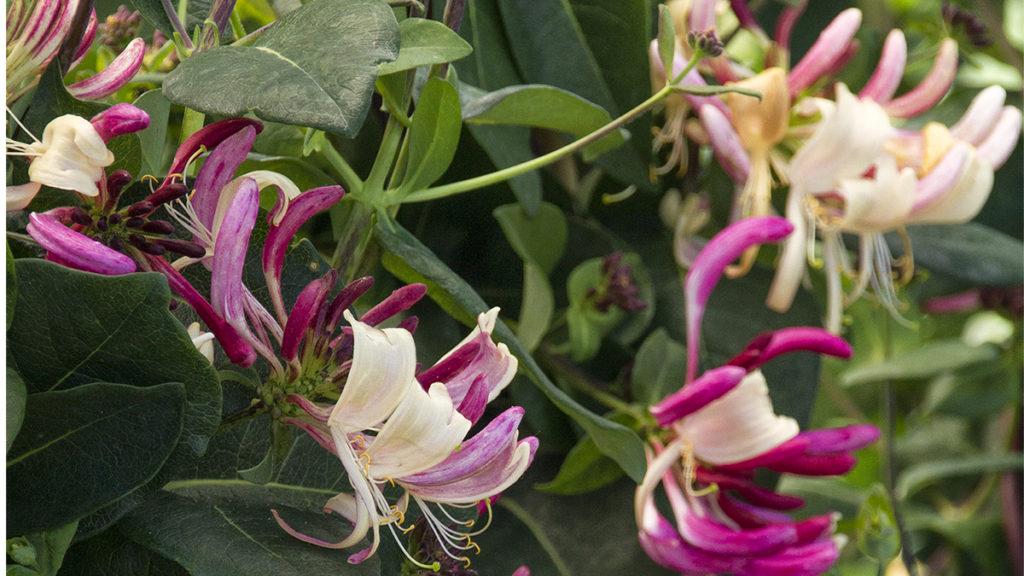Billowing into bloom from spring through summer (many bloom nearly year round in warmer zones.) As a group, honeysuckles are extremely easy to grow. Vigorous and often capable of covering support structures quickly. These flowering vines are lush with exotic and often very fragrant flowers that are beloved by butterflies and hummingbirds.
While non-invasive in many parts of the country, under ideal circumstances some honeysuckles, especially the Japanese hybrids, can be invasive. But the good news is that there are alternative species and varieties to consider. Especially if you love the look, habit, and useful size and scale of honeysuckle.
When selecting honeysuckles be sure to consult invasive species lists for your area. Plant those that are recommended as non-invasive. Here are three we recommend:
Peaches and Cream Honeysuckle
(Lonicera periclymenum ‘Inov 86’ P.P. #21,839)
Exciting, new compact variety with vibrant flowers exuding wonderful fragrance. Compact habit allows for simple trellising on arches and fences or cascading over rock walls. Tidy and well-mannered this one will not take over the garden. Stems up to 6 ft. tall. Partial to full sun. Zone: 4 – 9

Goldflame Honeysuckle
(Lonicera x heckrottii ‘Goldflame’)
A virtual wall of summer color with fragrant tubular flowers in vibrant pink and yellow blooming amid the vines. An excellent, generally non-invasive choice where other honeysuckles are considered invasive. Twining stems up to 15 ft. long. Partial to full sun. Semi-evergreen in milder climates; deciduous in colder areas. Zone: 4 – 9

Trumpet Honeysuckle
(Lonicera sempervirens ‘Magnifica’)
Native to the eastern/southeastern United States. Trumpet honeysuckle is alternative to Japanese honeysuckle in places where that species can be invasive. Clusters of bright red tubular flowers draw a constant buzz from hummingbirds and butterflies. Twining stems up to 20 ft. long. Partial to full sun. Evergreen in milder climates; semi-deciduous in colder areas. Zone: 4 – 9





Please login to comment.
Don't have an account?
Sign Up for free